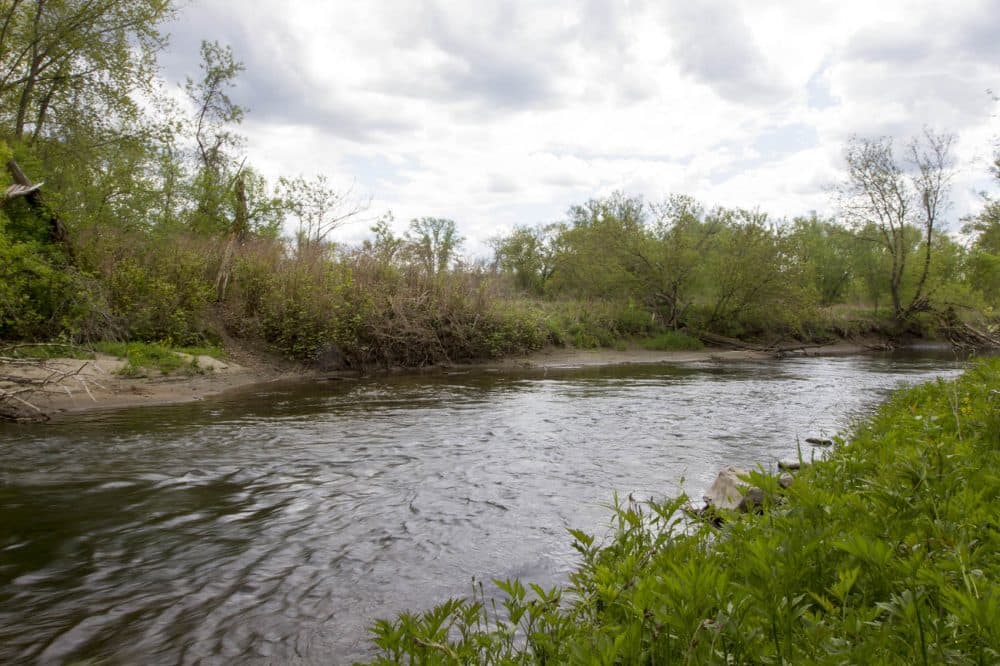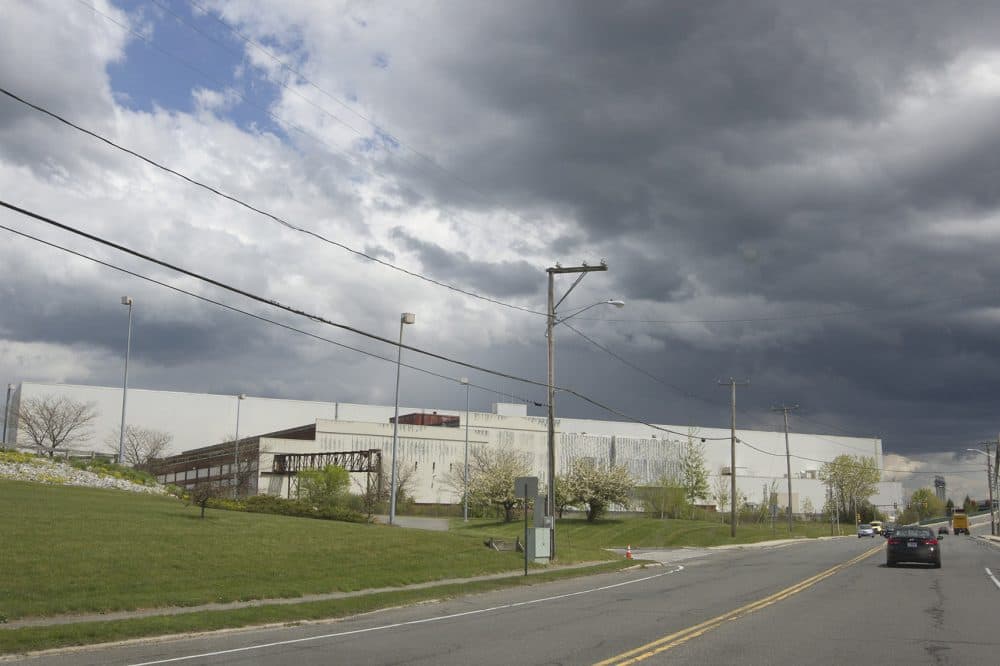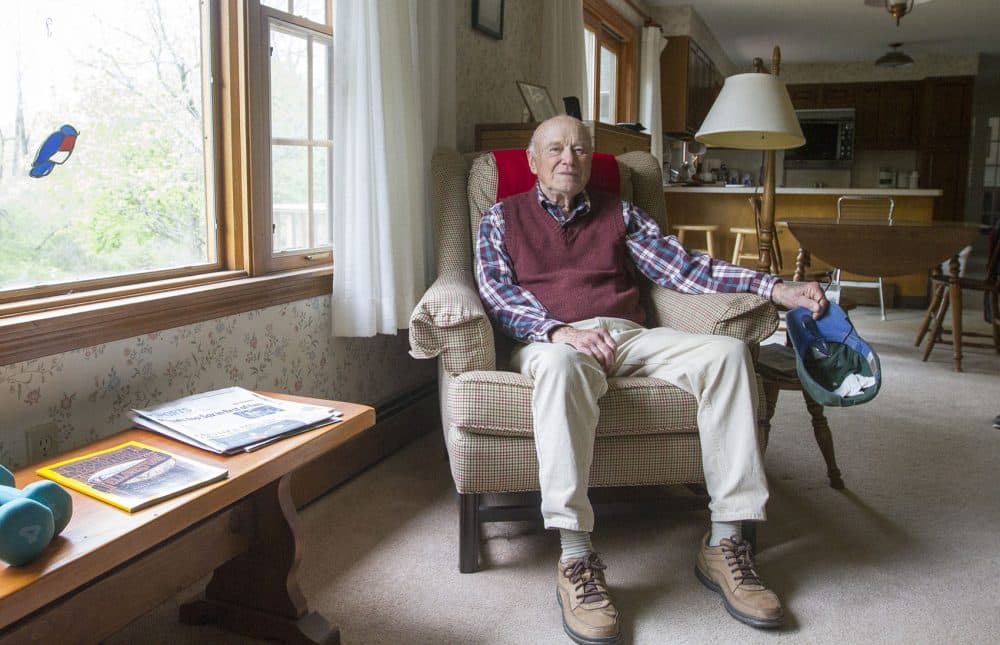Advertisement
GE Left Behind A Complex Legacy In Pittsfield

The first of two parts. Listen to Part 2 here.
PITTSFIELD, Mass. — General Electric's decision to relocate its corporate headquarters to Boston was greeted with intense fanfare. As GE and Boston look to the future, there remain important lessons from the past.
GE had a major presence in western Massachusetts for more than 80 years. So what can Boston learn from Pittsfield's experience? And what do the people of Pittsfield think about the impact GE had on their lives?
Answer: It's complicated. And definitely not as black and white as casual observers in the eastern part of the state might think.

'GE Was Really The Main Thing'
For the better part of a century, from 1907 to 1987, the Pittsfield transformer plant was one of the crown jewels of GE's electrical infrastructure, high voltage testing and defense contracting businesses. In fact, the company often featured the city in corporate promotional videos, such as this one from 1967.
But the reliability GE touted in the above video came at a cost. For decades, GE used PCBs (polychlorinated biphenyls) to make its transformers. The U.S. government declared PCBs a probable human carcinogen and banned them in 1979.
By then, however, the damage was done in Pittsfield. Land around the GE site and the Housatonic River was badly contaminated. That is the better-known part of GE's legacy in western Massachusetts.
The lesser-known aspect: the people who worked at the plant in its heyday, and the conflict between the surprisingly deep love they still have for the company, along with deep frustrations.
"General Electric was really the main thing," says Bob Cudmore, who reported and hosted mornings at WBEC radio in Pittsfield from 1968 until 1980. He was one of the few people who didn't work at the mammoth Pittsfield facility.
Advertisement
According to the company, at its height in the 1940s, some 13,000 people worked for GE in Pittsfield, out of a city of 50,000 people.
Cudmore remembers: "My wife, who was alive at the time, had told me once that she was at a social gathering, other women would come up to her and say, 'Well, what does your husband do at GE?' And she said, 'Well, he doesn't work at GE.' And she said they had a look in their face like, 'Well, you poor dear.' You know, you people might even be on relief or something like that."
GE's footprint in Pittsfield was huge in every way imaginable -- the number of people who worked for the company and the sheer size of the plant itself, a sprawling campus more than 300 acres in the heart of the city, along the banks of the Housatonic River.
"I don't know how many buildings they had, I'll guess they had 40, 50 buildings. Some of them are torn down, some of them are still here. It was a large plant," says Nicholas Boraski, the former head of the Pittsfield transformer and ordinance divisions. He's 89 now. He worked for GE for 38 years.
Boraski says that back in the day, GE was the kind of company that could make a career.
After all, he says, just look at who else got their start in Pittsfield: Jack Welch, GE's most famous CEO, who first joined the company as a chemical engineer in the plastics division.
"I worked for him, he was an avid golfer, I worked with him," Boraski says. "I was very fortunate, and I went further than I ever thought I'd go."
Just about everyone we talked to felt something similar. They were proud. Pittsfield was an old mill town that could've gone under at the end of the 19th century. But GE came in and helped revive it. Not only that, Pittsfield workers genuinely loved being part of a company that epitomized 20th-century American industrial ingenuity.
"Oh yes, absolutely," says Thomas Blalock, who started working at GE Pittsfield in 1966, where he was an engineer in the high voltage lab. "We really were at the top of the game of this research area."
"And you walk in the door, and you have the sight of the entire building, from one end to the other, a quarter of a mile away," he remembers. "And the overhead cranes, there's two cranes in that building, each one will lift 350 tons, and they were used together to lift the heaviest transformers. Somebody once said to me, 'You never get tired of being in this building and watching these mammoth things,' transformers flying through the air as it were -- all kinds of activity like that that was just fascinating."

How PCBs Came To Be Used — And Leaked
When in operation, those transformers needed to be cooled. GE's preferred coolant for its largest transformers was a high-quality mineral oil. But for smaller transformers, such as those used inside factories, schools or office buildings, starting in the 1930s GE began using a coolant called Pyranol.
In a 1951 GE video, the announcer explains: "Unless you're a chemist, the story of Pyranol may sound like something out of Buck Rogers. Broadly speaking, you take a molecule of dyphenol. Replace 5 hydrogen atoms with 5 chlorine atoms. Result? A transformer liquid with high dielectric strength that won't sludge or oxidize. But more than that, it won't burn."
Sounds like the perfect industrial chemical. But Pyranol has another name: the banned PCB.
But prior to the ban, GE was making thousands of these small transformers. Boraski, the former head of the transformer division, says Pyranol was ubiquitous and employees were in frequent contact with it.
"Including me," Boraski says. "I've worked in it up to here [elbows] changing links in transformers. I've walked in it. It was just something we did."
And all those PCBs had to go somewhere. They went into the groundwater, and then straight into the Housatonic River.
"People were not intentionally throwing it away, but piping systems leak," engineer Blalock says. "This plant you know, employed over 10,000 people, it was a pretty big plant, and you can imagine the extensiveness of the piping systems in a plant like that. And you just can't keep track of every foot of pipe. And now we're talking from the '30s to the '70s, 40 years. Yeah, a lot of Pyranol leaked."
The company also dumped barrels and PCB-soaked bricks at various sites on GE land in Pittsfield. We don't know the total amount of Pyranol that made its way into the Housatonic. GE estimates that there could be up to 70,000 pounds of PCBs left in the river today; the EPA puts that number at 600,000 pounds. And that's after Phase 1 of an extensive cleanup in the heart of Pittsfield that followed a 1998 consent decree between GE, Pittsfield and the federal and state governments.
But back in the 1970s, there were more roundabout ways that people knew something wasn't quite right with the water.
Reporter Cudmore remembers an usual crime report near the Silver Lake, in the heart of Pittsfield.
"I was working one weekend," Cudmore recalls, "and the police pulled a car out ... that had gone in the lake at some point in the past, they didn't know when. And there was a dead body inside or somebody had been in the car. I didn't look at the corpse, but I asked the officers, and they said, 'Well, I think this man died many weeks, months ago, because the body's very badly deteriorated. But then they determined that the car and the man had gone into the lake only the week before, or something like that, and the chemicals had acted on his person in that way."
GE and the EPA finished the cleanup of Silver Lake in 2013. By 1979, PCBs were completely banned.
Boraski says GE, however, had seen the writing on the wall even before that.
"I'm an environmentalist too," Boraski says. "My personal feeling is that nothing should go in the river. The stuff got in the river because of ... well I would have to say carelessness, I guess. It wasn't deliberate, they didn't pour it in the river; it came from the plant, it drained into the river. One thing I could say about the use of Pyranol is I was the guy who ordered it to be stopped. All right? Because I didn't want the government yelling at me. Not because I thought it was dangerous."
Conflicted Feelings
It's easy to pass judgment at a distance. He's an environmentalist, but he doesn't think PCBs are dangerous? Nothing should go in the river, but he stopped GE's use of Pyranol just because he wanted the government off his back?
In Boraski's words are the complicated, conflicted feelings GE's longtime Pittsfield employees have about the company. No one we talked to loved the fact that the company contaminated the Housatonic with vast amounts of PCBs. But as Boraski insisted, it wasn't deliberate. That really matters to him. Because to this day, Boraski also says GE was the best company he ever worked for.
"Ruth, my wife, and I when I retired we continued our work in charities, and did a lot of good in that area," he says. "Set up a lot of funds for kids, and scholarships and funds both for various schools and organizations. So GE was the source of my being able to do that. So it was a good company, I thought it was an excellent company."
"GE did a lot in Pittsfield," Cudmore says. "No. 1, it did pay its workers well. And also was much involved in community activities, some go so far as calling it welfare capitalism. I mean GE in Pittsfield was the first place organizations, the Boy Scouts, the Girl Scouts, the antipoverty agencies, who needed money for quote-unquote good works, they'd be the people you'd approach, because they'd be the ones who would be most likely to support you."
But of course, the flip side to that is a community that becomes reliant on that seemingly endless corporate support.
"Everybody referred to GE as THE GE," Cudmore says. "It was like you were talking about THE GOVERNMENT. It was seen as something that was immutable, or that it wouldn't change. But of course we found out it could change, and in fact it did change."
GE left Pittsfield. And it took those thousands of jobs, and all that corporate largess, with it.
"It was pretty much a shocker," Blalock says. He was still at the high voltage lab when in 1986, GE announced it would close the transformer division. "I remember being told at the time the plant decided to close down that we actually were in the black, but we were not far enough in the black to be producing enough return on the investment in the plant. That, plus, as I recall, at the time the CEO of General Electric was Jack Welch, he was guiding the company into directions other than heavy manufacturing, which turned out good and bad. Turned out good because he drove the value of the company up during that era, but now there is some feeling that maybe all of that went just a little bit too far."
Boraski is more direct. He has one word to describe the effect GE's departure had on Pittsfield: disastrous.
A slow motion disaster. The transformers division completely shut down in 1987. But by the early '80s GE Pittsfield employed only 7,000 workers — a little more than half of what it had been in the 1940s, according to a 1984 Boston Globe article. Today GE employs less than that. So as the numbers continued to shrink, so did the tax base and the corporate philanthropy that was so essential to the city.
"You go to some of the union members," Cudmore says, "and their offspring to this day, you know, are mad at GE."
Ultimately, GE moved on. It's coming to Boston, seeking to remake itself into an industrial and tech company for the digital age. But no matter what kind of company it becomes or where it goes, GE leaves behind a complex legacy in western Massachusetts that the people of Pittsfield have to live with.
"After GE pulled out," Cudmore says, "the people didn't blame GE so much for that, but they did start blaming GE for the pollution. For the problems that they left behind. It was all well and good that this company was here, and provided steady employment for many decades but now look at this big mess."
Part 2: GE cleaned up PCB contamination in the heart of Pittsfield, but there's a big debate over how to clean up the rest of the Housatonic.
This article was originally published on June 29, 2016.
This segment aired on June 29, 2016.

